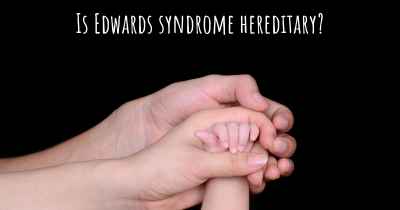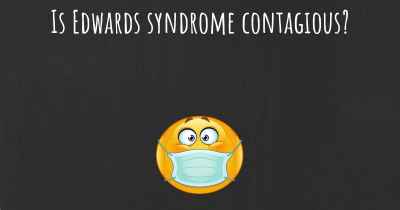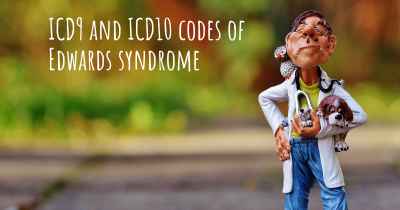Which are the symptoms of Edwards syndrome?
See the worst symptoms of affected by Edwards syndrome here

Edwards syndrome, also known as Trisomy 18, is a genetic disorder caused by the presence of an extra copy of chromosome 18 in the cells of an individual. This condition occurs in approximately 1 in every 5,000 live births and is more common in females than males. Edwards syndrome is characterized by a wide range of physical and developmental abnormalities, which can vary in severity from person to person.
Physical features:
- Craniofacial abnormalities: Infants with Edwards syndrome often have a small, abnormally shaped head (microcephaly) and a prominent back portion of the skull (occiput). They may also have a small jaw (micrognathia), low-set ears, and a small mouth.
- Distinctive facial appearance: Individuals with Edwards syndrome may have a small, upturned nose, widely spaced eyes (hypertelorism), drooping eyelids (ptosis), and a small chin.
- Hand and foot abnormalities: They may have clenched fists with overlapping fingers, a small fifth finger that curves inward (clinodactyly), and a prominent heel.
- Heart defects: The majority of individuals with Edwards syndrome have structural abnormalities of the heart, such as ventricular septal defects (holes in the heart), atrial septal defects, or patent ductus arteriosus.
- Kidney abnormalities: Some individuals may have kidney malformations or other urinary tract abnormalities.
- Growth restriction: Babies with Edwards syndrome often have slow growth before birth, resulting in low birth weight and short stature.
- Other physical features: They may have a small chest, a hernia in the diaphragm or groin, clubbed feet, or a cleft lip and palate.
Developmental and medical issues:
- Intellectual disability: Most individuals with Edwards syndrome have severe intellectual disability and developmental delays. They may have difficulty with motor skills, speech, and learning.
- Feeding difficulties: Infants with Edwards syndrome often have difficulty feeding due to weak sucking reflexes and other oral motor problems.
- Respiratory problems: They may experience episodes of apnea (pauses in breathing) and have a higher risk of respiratory infections.
- Seizures: Some individuals with Edwards syndrome may develop seizures, which can vary in frequency and severity.
- Gastrointestinal issues: They may have gastrointestinal abnormalities, such as malrotation of the intestines, which can lead to feeding difficulties and digestive problems.
- Genitourinary abnormalities: Some individuals may have undescended testicles in males or structural abnormalities of the female reproductive system.
- Skeletal abnormalities: They may have joint contractures, scoliosis (curvature of the spine), or other skeletal abnormalities.
- Eye and hearing problems: Vision and hearing impairments, such as cataracts, strabismus (crossed eyes), or hearing loss, can occur in individuals with Edwards syndrome.
- Increased risk of infections: Due to a weakened immune system, individuals with Edwards syndrome are more susceptible to infections.
Prognosis and management:
Edwards syndrome is associated with a high mortality rate, and many affected individuals do not survive beyond the first year of life. The severity of the condition and the presence of multiple organ abnormalities contribute to the poor prognosis. However, with advances in medical care, some individuals with Edwards syndrome may live into their teenage years or early adulthood.
There is no cure for Edwards syndrome, and treatment primarily focuses on managing the symptoms and providing supportive care. This may involve addressing feeding difficulties, monitoring and treating heart defects, managing respiratory problems, and providing early intervention services to support development.
In conclusion, Edwards syndrome is a genetic disorder characterized by a range of physical and developmental abnormalities. The physical features include craniofacial abnormalities, distinctive facial appearance, hand and foot abnormalities, heart defects, kidney abnormalities, growth restriction, and other physical anomalies. Developmental and medical issues associated with Edwards syndrome include intellectual disability, feeding difficulties, respiratory problems, seizures, gastrointestinal issues, genitourinary abnormalities, skeletal abnormalities, eye and hearing problems, and increased risk of infections. The prognosis for individuals with Edwards syndrome is generally poor, but with appropriate medical care and support, some individuals may live longer lives.








